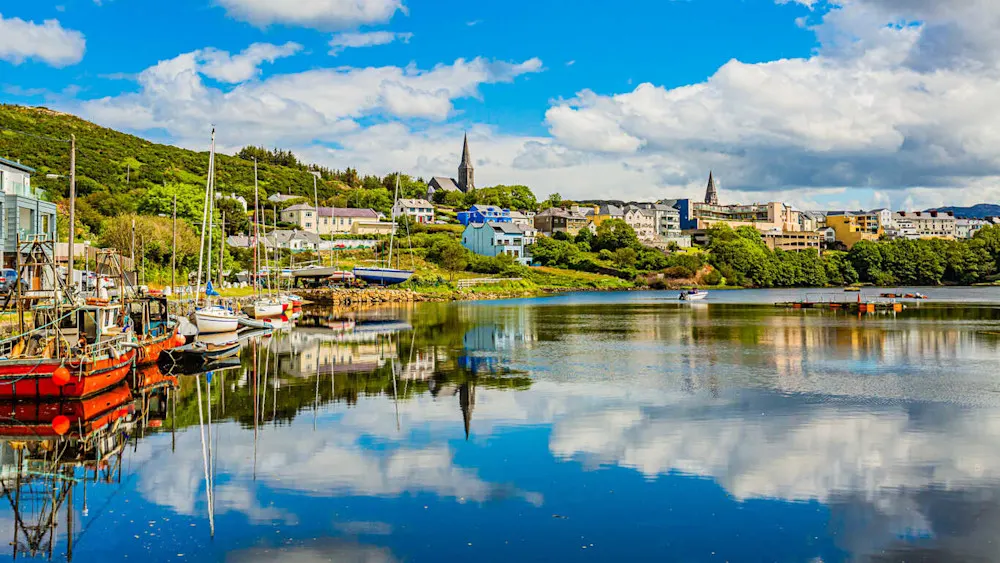As a regular reader of International Living publications, you might know that our operational headquarters is in Waterford, Ireland. Our connection with the Emerald Isle goes back many decades.
Ireland has long held a special place in the American imagination. Outside of Ireland itself, the US hosts the biggest St Patrick’s Day festivities in the world. That’s because around 5 million Irish emigrated to the United States in the century between 1820 and 1920. Today, nearly 10% of Americans have enough Irish ancestry to potentially qualify for citizenship. At over 30 million people, that’s almost six times the number of native Irish!
And yet, Ireland isn’t usually seen as a migration destination. (I think that’s because the “global migration” media is dominated by consultants who cater to the ultra-wealthy, who they assume are mainly interested in low taxes.)
How to Get a Second Passport
How to Get a Second Passport
According to Forbes, 133 million Americans could be eligible for an EU passport…
Our expert shows you 4 paths to a European passport (and the one he’s taking), plus the most common way for Americans to get a second passport in Europe.
Claim your free report and bonus video when you sign up for International Living's Daily Postcards.

By submitting your email address, you will receive a free subscription to IL Postcards, Overseas Dream Home, The Untourist Daily and special offers from International Living and our affiliates. You can unsubscribe at any time, and we encourage you to read more about our Privacy Policy.
But Ireland really should be at the top of anyone’s list if you’re after a second passport. Consider the accolades the island nation has earned over the last decade:
Easiest place to open and operate a business.
Most economically free country in the world.
One of the top recipients of foreign direct investment.
One of the highest rankings on the UN Human Development Index.
One of the world’s highest proportions of university-educated residents.
One of the most innovative technology sectors in Europe.
In the top 10 safest countries in Europe.
The only European country to be a member of two transnational travel blocs — the Schengen Area and the Common Travel Area (Ireland and UK).
The Irish passport is one of the top three in the world, allowing visa-free access to 191 countries.
Of course, Ireland’s natural beauty and built environment are legendary. The place really is overwhelmingly green! Its people are friendly, laid back, and have a great sense of humour. (Their rugby team is pretty good, but not quite as good as the South African Springboks. And their whiskey is outstanding.)
So how can someone with Irish ancestry claim citizenship and get a passport there? It’s quite straightforward.
First, determine your eligibility. You can claim Irish citizenship if you have at least one grandparent who was born in the country, regardless of whether your parent was an Irish citizen. You can also claim citizenship if a great-grandparent was born in Ireland, but in that case, your parent must have registered themselves in the Irish Foreign Births Register before you were born.
Second, gather the necessary documentation. That includes your birth certificates and those your parents, grandparents, and great grandparents if necessary. You also need a photocopy of your current passport and ID, proof of your residential address, and any other supporting documentation like marriage and death certificates.
If you can’t find birth certificates for those born in Ireland, it’s often possible to get baptismal certificates from Church parishes in the village or town where they were born. Those are considered acceptable alternatives.
Third, you apply through the Irish Department of Foreign Affairs. The fee is €278 (around $314) and requires that you submit original documents and statutory declarations.
Once you’ve done that, it’ll take six to 18 months to process your application. Once approved, you’ll receive a certificate of entry into the Foreign Births Register, which confirms that you are an Irish citizen. At that point you simply need to visit an Irish consulate and apply for a passport.

On a personal note, Ireland will always have a special place in my heart… or rather my urinary tract. On my first visit to the country to meet my new employers at International Living, I began showing the symptoms of a kidney stone. If you’ve ever had one, you’ll know it’s hard to appear professional in that condition. Nevertheless, my new boss courteously drove me to a local hospital, where I received outstanding medical treatment over six hours from friendly and competent physicians. Total cost to me as a non-EU citizen visiting the country: €89 ($100).
If you’d like to explore the possibility of acquiring Irish citizenship, drop me a line at Global Citizen, and I’ll set up an appointment for us to set the ball rolling!
How to Get a Second Passport
How to Get a Second Passport
According to Forbes, 133 million Americans could be eligible for an EU passport…
Our expert shows you 4 paths to a European passport (and the one he’s taking), plus the most common way for Americans to get a second passport in Europe.
Claim your free report and bonus video when you sign up for International Living's Daily Postcards.

By submitting your email address, you will receive a free subscription to IL Postcards, Overseas Dream Home, The Untourist Daily and special offers from International Living and our affiliates. You can unsubscribe at any time, and we encourage you to read more about our Privacy Policy.
